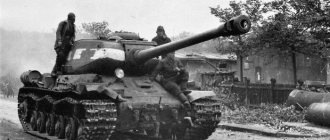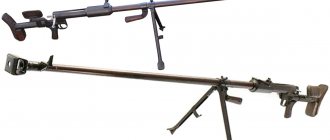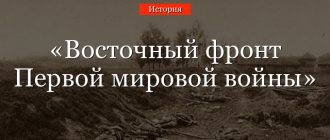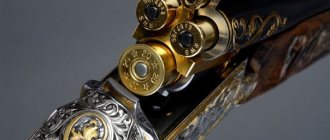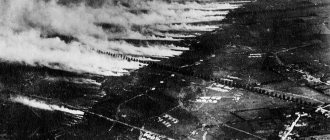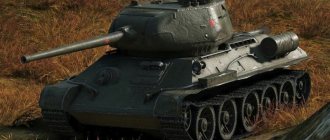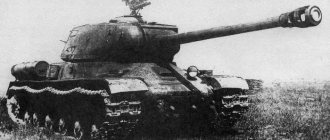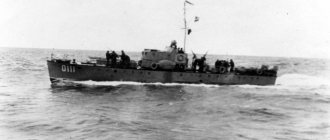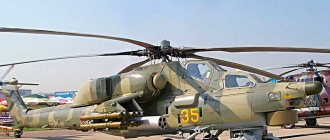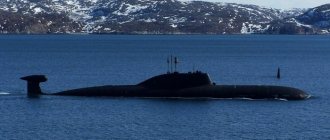Real Pripyat is not too similar to the locations of Stalker. This is disappointing for some. The last reactor was shut down in 2000, but to this day modern buildings stick out next to the picturesque “abandoned” area, people walk and vehicles pass by.
Before the forest fires of 2020 and the coronavirus pandemic, there were enough tourists in the exclusion zone. With snorks and pseudo-giants the situation is much worse, and only departmental controllers are found.
But here you can find steelhead “hunters”.
A little about the locations
Between the Yanovsky backwater, the evicted microdistricts of Pripyat and the Red Forest, oil depot facilities are still operating. Near the eastern fence of one of them, a massive silhouette picturesquely grows into the ground, which a lover of military history will instantly recognize.
A WoT player cannot resist commenting: “Log thrower!” The tactical number “130” is still visible on the rusty armor.
(Photo: KRANZ)
If you look closely at the nearby dump of liquidators’ equipment, you will find another self-propelled gun. In much worse condition, with a torn engine and transmission compartment and no barrel. The gun was not snatched by stalkers looking for swag or hunters for radioactive ferrous metal. It was in this form that the car with tail number “100” arrived at the still smoking Chernobyl nuclear power plant in May 1986.
(Photo: KRANZ)
There was one more. With barrel and tail number "129". She is most often seen in photographs from the time of liquidation - but her further fate is not entirely clear.
According to one version, it got stuck and was abandoned in the vicinity of the village, now the Korogod tract - a wasteland 12 kilometers southwest of Pripyat, not far from the “psychotronically burning brains” radar “Duga”. According to some statements, it was here that an improvised platoon of engineering troops on the ISU was based.
(Photo source)
As eyewitnesses say, you can find a herd of Przewalski’s horses near the crumbling houses and farms of Korogod, but with the self-propelled gun “129” everything is complicated. Either it exists, or it doesn’t, or it existed, but then disappeared. Photos of this machine after the completion of the liquidation work are not visible on the Internet, unlike its “colleagues” at the oil depot.
How was the armor protection provided?
The frontal parts of the first ISU-152 were cast. The armor casting was then replaced by a welded structure. For this purpose, armored rolled plates were used in the production of hulls and deckhouses, which provided the tank with differentiated projectile protection. Their thickness was 2, 3, 6, 7, 9 cm and 5 mm. When installing them, rational angles of inclination were taken into account. As a result, this was reflected in the height and volume of the armored cabin in the ISU-152 “St. John’s wort”.
The characteristics of the degree of protection of the sides of this tank, compared to the SU-152, were somewhat lower. But the designers managed to compensate for this by thickening the armor. To protect the recoil devices, fixed cast armored casings and movable cast spherical armored masks were used, which were also used as a balancing element.
Where did self-propelled guns come from in Pripyat?
As far as is known, the vehicles were transferred to Pripyat from a storage base in Novomoskovsk, Dnepropetrovsk region. The territory of the Ukrainian SSR was considered the rear of Soviet groups in Europe and was surprisingly rich in military warehouses: you never know what old military property could be useful if the Third World War did not go well for the USSR.
It was not the self-propelled guns of World War II type that were sent to eliminate the accident at the nuclear power plant. ISU-152K - modernization of the mid-1950s, with a new 520 hp engine. With. and elements of the T-10 heavy tank in the chassis. Vehicles of this type managed to fight during the suppression of the Hungarian uprising and in the Arab-Israeli wars. By 1974, they were recognized as not meeting modern requirements and were sent to storage bases.
(Photo source)
On the same topic
The nuclear frontier: what will happen to global energy?
Many sources claim that there were about a dozen “hunters” during the liquidation of the Chernobyl accident. Photos leaked online show three cars, of which the skeletons of two have survived to this day. Two are ordinary, with ML-20S guns, one is without, with a plug in place of the barrel.
Sometimes they write about lead screens, but they are not visible in the photographs. However, the armor of the self-propelled guns itself should have served as good protection for the crew.
Most eyewitnesses and authors who tried to figure it out are inclined to believe that self-propelled guns near Chernobyl were used as heavy tracked tractors. And also for demolishing buildings with ramming attacks. But the BTT-1, a tank tractor based on the ISU-152, is more suitable for these purposes. Everything is the same, only with a standard armor plate in place of the gun and a number of modifications for use in just such situations.
Why were self-propelled guns with guns sent to eliminate the accident, and not tractors based on them, adapted for engineering work? Or are those who say that the ISU-152K fired 152-mm guns at the burning station right?
Who developed the tank?
Work on the creation of the ISU-152 “St. John’s wort” was carried out by the design bureau of pilot plant No. 100 in the city of Chelyabinsk. Joseph Yakovlevich Kotin became the head. Under his leadership, the entire line of Soviet heavy tanks was created. The chief designer of the ISU-152 “St. John’s Wort” is G. N. Moskvin. The first cars were produced by the Chelyabinsk Kirov Plant (ChKZ) in 1943. Several units were manufactured by workers of the Leningrad Kirov Plant (LKZ). For only three years (from 1943 to 1946), serial production of the ISU-152 “St. John’s wort” was carried out.
Why exactly ISU?
In Pripyat, the forces of the engineering department of the 90th operational group mainly operated IMR and IMR-2 engineering vehicles. Soon the specially converted IMR-2D arrived.
They were more expensive than ISU and BTT, but more powerful, more modern, with a manipulator on the body and a system of protection against weapons of mass destruction. Additional shielding with lead allowed them to operate even in areas of high radiation contamination near the ruins of the fourth power unit.
(Photo source)
But the presence of a manipulator precluded their use for demolishing tall buildings with a ram, in which concrete would fall from above and break valuable equipment.
For this purpose, the ISU-152K with strong armor and a removed machine gun is much more suitable.
However, BTT-1 in this quality would be even better.
Only, unlike the ISU-152K, they do not have the ML-20S gun, which can fire concrete-piercing and cumulative ammunition to “open” bunkers and other fortified buildings.
Description of design
The layout of this self-propelled gun mount is no different from other Soviet self-propelled guns. The combat vehicle is protected by an armored hull. The design of the tank consists of two parts: the armored cabin and the stern.
The crew consisted of five people. The front part of the hull, being a combat and at the same time management compartment (armored room), became the location of the driver, gunner and loader, all ammunition and the main gun. The aft part became the location of the engine and transmission. The commander and castle commander were located to the right of the gun. According to eyewitnesses, the crew’s chances of getting out alive when the tank was hit were minimal. The reason for this was the presence of a fuel tank in the wheelhouse.
Structure of a tank corps
For boarding and egress of the crew, the ISU-152 is equipped with a special rectangular double-leaf hatch located in the upper part of the hull between the roof and rear sheet of the armored cabin. On the right side of the tank gun there was also a round hatch. There was also a hatch to the left of the gun, but it was not intended for the crew. Only the extensions of the panoramic sights were brought out through these hatches. If necessary, the crew could leave the ISU-152 using the emergency hatch in the bottom of the hull. The combat kit was loaded into the tank through small hatches. The combat vehicle was equipped with small repair hatches, which provided quick access to the neck of the fuel tank, the tank unit or any other component.
Chassis design
The ISU-152 was equipped with an individual torsion bar chassis. On each side of the side there were solid cast dual-slope road wheels (6 pieces). For each of them, a special travel stop was provided, which was connected to the armored hull by welding. To support the tank track, three small solid-cast support rollers were used. The SU-152 had a similar design. The caterpillar tension was carried out using a screw mechanism. The tracks were equipped with special single-ridge tracks, 986 pieces), the width of which was 65 cm.
Design of sights and surveillance equipment
The crew of the ISU-152 tank could monitor the environment through the landing and disembarking hatches, which were equipped with special periscope devices. A viewing device with a triplex was provided for the driver. Protection for this device was provided by an armored flap. The location for installing the device was a plug hatch located on the left side of the tank howitzer. In a non-combat situation, this hatch moved forward, due to which the driver’s viewing radius increased.
During direct fire at a distance of 900 meters, ST-10 telescopic sights were developed for the guns. When firing from a closed position, as well as during direct fire at a distance exceeding 900 meters, the Hertz panorama was used. For this purpose, special extensions were developed that provided visibility through the hatch in the tank roof. Thanks to the presence of special illuminating devices, firing from the ISU-152 was also possible at night.
Electrical equipment
The power source for single-wire wiring in the ISU-152 was the P-4563A generator using a 1 kW RRA-24F relay generator. Also, power supply could be provided using two series-connected 6-STE-128 batteries. Their total capacity was 128 A/h. The energy in the tank was necessary to provide:
- External and internal lighting of a combat vehicle.
- Illuminated sighting devices.
- External sound signal.
- Operation of control and measuring instruments (ammeter and voltmeter).
- Operation of the radio station and tank intercom.
- Operation of the inertia starter electric motor, spark plug spools used for winter engine starting.
Transmission
A mechanical transmission was provided for the combat vehicle. It consisted of the following elements:
- Multi-disc main clutch.
- Four-speed gearbox.
- Two onboard two-stage planetary rotation mechanisms.
- Two combined final drives (double-row).
The tank was equipped with mechanical control drives. The ISU-152 tank differed from the previous model by the presence of planetary rotation mechanisms. Due to these components, the transmission has become more reliable, which cannot be said about combat vehicles created on the basis of the KV tank.
